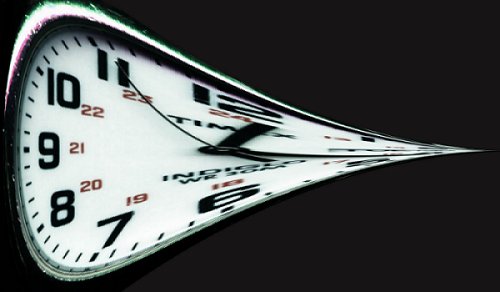
Cause and effect is pretty easy to understand. I pick up a remote control, press the power button and my TV turns on. Me pressing the power button is the cause, the TV turning on is the effect. We all learned about it in grade school.
But what if that were reversed? What if my TV turned on, and that caused me in the past to press the power button on the remote control? It goes against everything we think we know about the way the universe works, but that is the essence of the theory of retrocausality. The effect
creates the cause. It sounds like something straight out of the pages of science fiction, but many scientists today believe that retrocausality could be a real phenomenon.
From wikipedia: Retrocausality (also called retro-causation, backward causation and similar terms) is any of several hypothetical phenomena or processes that reverse causality, allowing an effect to occur before its cause.
According to Paul March from a Talk Polywell comment: Dr. Cramer's retrocausal experiment should be completed by the end of this year. And if verified it would buttress Dr. Woodward's M-E (Mach Effect) arguments and provide a path to finally merging GRT (General relativity) with QM (Quantum Mechanics).
A 36 page presentation from 2007: The UW Nonlocal Quantum Communication Experiment by John Cramer
Entanglement: The separated but “entangled” parts of the same quantum system can only be described by referencing the state of other part.
The possible outcomes of measurement M2 depend of the results of measurement M1, and vice versa. This is usually a consequence of conservation laws.

Nonlocality: This “connectedness” between the separated system parts is called quantum nonlocality. It should act even of the system parts are separated by light years. Einstein called this “spooky actions at a distance.”
Physicist York Dobyns explains retrocausality -- how human intentions affect the past; discusses Cal Tech Physicist Kip Thorne's theories of wormholes on the fabric of space and time; and touches upon some of the strange implications of our current understanding of quantum mechanics. Interview by Tom Munnecke at the American Association for the Advancement of Science at University of San Diego on June 23, 2006.
York Dobyns earned his PhD in physics at Princeton and is the Analytical Coordinator for the Princeton Engineering Anomalies Research (PEAR) program.
For more information, visit: http://www.princeton.edu/~pear/

A Brief History of Retrocausality Experiments: 35 years ago, Helmut Schmidt pioneered studies on the effects of human intention on random event generators (REGs) — machines which generate a string of qubits that can be imagined as a stream of coins flipping in the air. Using REG data which were prerecorded and unobserved, Schmidt showed that his subjects were able to influence selected heads or tails events which had occurred up to six days earlier. More recently, Brenda Dunne and Robert Jahn (PEAR) conducted close to 87,000 similar (and statistically significant) REG/RPK experiments. Elmar Grubers retrocausation experiments (PK Effects on Pre-Recorded Group Behaviour of Living Systems European Journal of Parapsychology, 3, 1980, 167-75) showed that conscious intention can seemingly influence the past activity of both animals and humans. In one of the human trials, the effect size was 0.74, which is over twenty-three times greater than the effect size of most prescription drugs (0.032). These studies — and numerous others involving everything from steel marbles to human skin conductance and heart rate — have shown the apparent effect that conscious intent has on altering events which have already occurred... Or, at least, events which have already occurred from our commonly held perspective.
Part 2: http://www.youtube.com/watch?v=bYOaQQUWk7s
Part 3: http://www.youtube.com/watch?v=AAUTs-1ukrY
![Reblog this post [with Zemanta]](http://img.zemanta.com/reblog_e.png?x-id=1759c111-c1a2-4447-b767-fdf19adf5437)
No comments:
Post a Comment